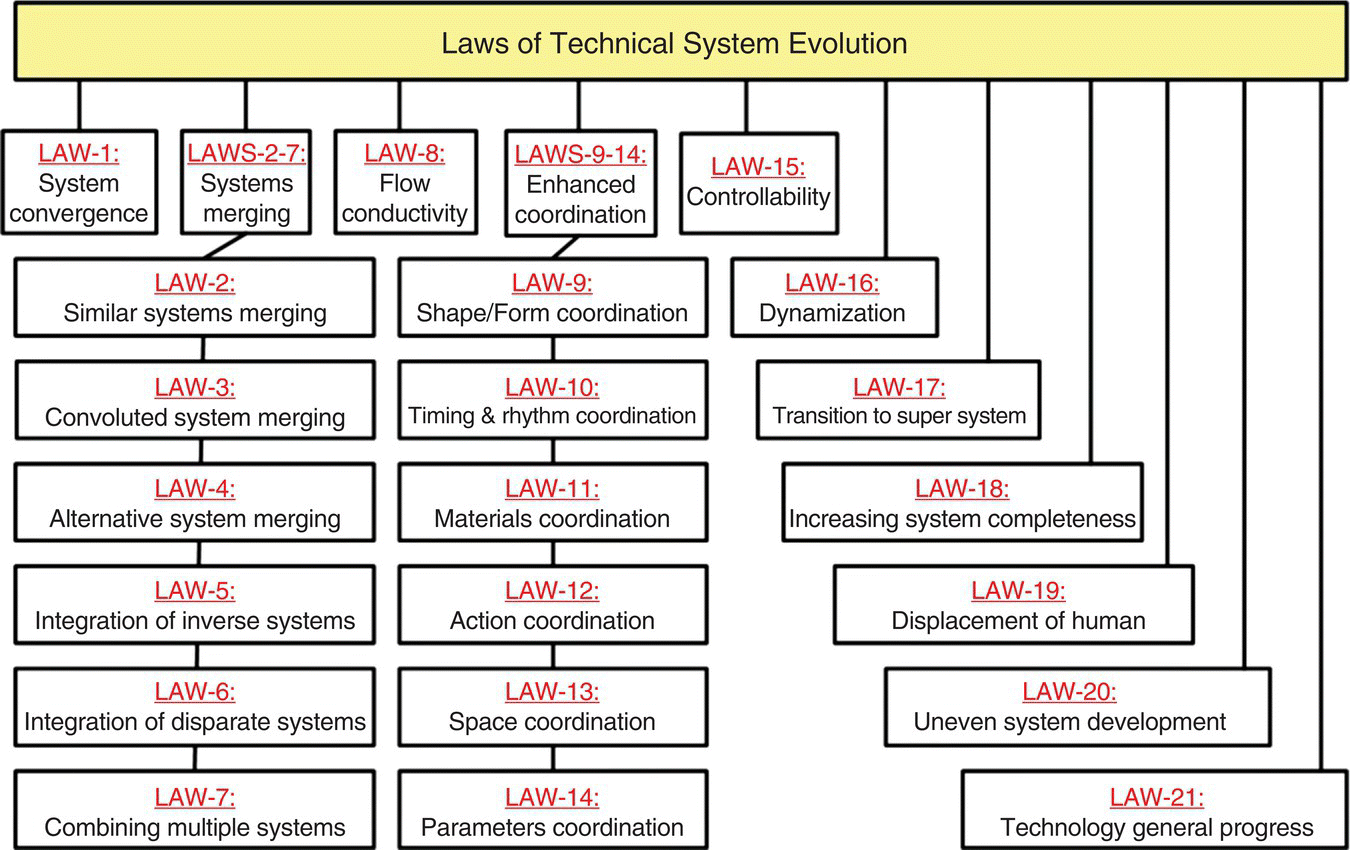Appendix BExtended Laws of Technical Systems Evolution
An extended set of technical systems evolution laws1 was used during the AMISA project. This extended set has also been embedded into the DFA‐Tool. The appendix describes this set of 21 laws, in which each individual law defines unique mechanism along which systems increase their ideality (Figure B.1).

Figure B.1 Laws of technical system evolution
B.1 Law 1: System Convergence
The law of system convergence represents a pattern of systems evolution in which the number of elements from which the system is composed tends to decrease over time, without degradation in the performance of the system itself. This reduction in the number of components is often accompanied with system’s cost reduction, both leading to improvement in the system’s ideality.
The functional capacity of the system is often maintained by redistribution of the useful functions to the remaining elements of the system (i.e. this process is called system merging). In other cases, some inner system functionalities may disappear altogether without affecting the external capabilities of the system.
Example
A company manufacturing transmission systems with hydraulic torque converters was able to continually reduce the number of parts by 70% over a period of three decades (Figure B.2).
Figure B.2 Continual reduction in number of parts and costs
B.2 Laws 2 to 7: Systems ...
Get Practical Creativity and Innovation in Systems Engineering now with the O’Reilly learning platform.
O’Reilly members experience books, live events, courses curated by job role, and more from O’Reilly and nearly 200 top publishers.

